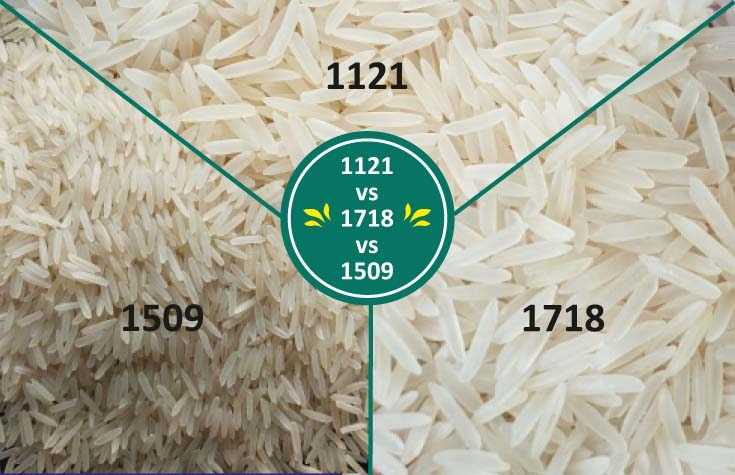Basmati rice, with its long grains and fragrant aroma, is a staple in many kitchens around the world. Whether you’re preparing a simple rice dish or a complex biryani, knowing how to cook basmati rice perfectly is essential. In this blog post, we’ll walk you through the step-by-step process to achieve fluffy, separate grains of basmati rice every time. We’ll also share some tips and tricks to enhance your cooking experience.
Introduction to Basmati Rice
Basmati rice is a type of long-grain rice known for its aromatic fragrance and delicate flavor. It is commonly grown in India, Pakistan, and Nepal. The word “basmati” comes from the Sanskrit word “vasmati,” which means “fragrant” or “aromatic.” This rice is often used in Indian, Middle Eastern, and Persian cuisines, making it a versatile addition to your culinary repertoire.
Why Rinse Basmati Rice?
Rinsing basmati rice is a crucial step that should not be skipped. Rinsing removes excess starch from the surface of the grains, preventing them from becoming sticky and clumpy during cooking. To rinse basmati rice, place it in a fine-mesh strainer and rinse under cold water until the water runs clear. This usually takes about 2-3 minutes.
The Perfect Water-to-Rice Ratio
The water-to-rice ratio is a critical factor in cooking perfect basmati rice. The ideal ratio is typically 1.5 to 2 cups of water for every 1 cup of rice. However, this can vary slightly depending on the age and type of rice. Older rice tends to be drier and may require a bit more water.
Cooking Methods
Stovetop Method
- Rinse the Rice: As mentioned earlier, rinse the basmati rice under cold water until the water runs clear.
- Soak the Rice: Soak the rinsed rice in water for about 30 minutes. This helps the grains expand and cook evenly.
- Boil the Water: In a large pot, bring the water to a boil. Add a pinch of salt to enhance the flavor.
- Add the Rice: Drain the soaked rice and add it to the boiling water.
- Simmer: Reduce the heat to low, cover the pot with a tight-fitting lid, and let the rice simmer for 15-20 minutes.
- Rest: Once cooked, remove the pot from heat and let it sit, covered, for 5 minutes. This allows the steam to finish cooking the rice.
- Fluff: Use a fork to gently fluff the rice before serving.
Rice Cooker Method
- Rinse the Rice: Rinse the basmati rice under cold water until the water runs clear.
- Soak the Rice: Optional, but soaking for 20-30 minutes can improve the texture.
- Add Water: Transfer the rinsed rice to the rice cooker and add the appropriate amount of water (1.5 to 2 cups of water per cup of rice).
- Cook: Turn on the rice cooker and let it do its job. Most rice cookers will automatically switch to a “keep warm” setting once the rice is cooked.
- Fluff: After cooking, let the rice sit for a few minutes, then fluff with a fork.
Instant Pot Method
- Rinse the Rice: Rinse the basmati rice under cold water until the water runs clear.
- Add Water: Add the rinsed rice and water to the Instant Pot (1.25 cups of water per cup of rice).
- Pressure Cook: Close the lid, set the valve to sealing, and cook on high pressure for 6 minutes.
- Natural Release: Allow the pressure to release naturally for 10 minutes, then manually release any remaining pressure.
- Fluff: Open the lid and fluff the rice with a fork.
Fluffing and Serving Basmati Rice
Fluffing basmati rice is an important step to ensure the grains remain separate and fluffy. Use a fork to gently lift and separate the grains. Avoid using a spoon or stirring too vigorously, as this can break the delicate grains and make the rice sticky.
Tips for Perfect Basmati Rice
- Quality Matters: Choose high-quality basmati rice for the best results. Aged basmati rice often yields better texture and flavor.
- Use a Heavy-Bottomed Pot: When cooking on the stovetop, use a heavy-bottomed pot to prevent the rice from burning.
- Let it Rest: Allow the cooked rice to rest for a few minutes before fluffing. This helps the grains settle and absorb any remaining moisture.
- Flavor Enhancements: For added flavor, you can cook the rice with whole spices such as cardamom pods, cloves, and bay leaves. Adding a bit of ghee or butter can also enhance the taste.
Frequently Asked Questions (FAQs)
1. Can I cook basmati rice without soaking it? Yes, you can cook basmati rice without soaking, but soaking helps achieve a better texture and reduces cooking time.
2. How do I store leftover basmati rice? Store leftover rice in an airtight container in the refrigerator for up to 4 days. Reheat it with a splash of water to restore its moisture.
3. Can I freeze cooked basmati rice? Yes, cooked basmati rice can be frozen. Allow it to cool completely, then store in a freezer-safe container for up to 3 months.
4. How do I prevent basmati rice from sticking? Rinsing the rice thoroughly and using the correct water-to-rice ratio are key to preventing sticky rice.
5. What dishes can I make with basmati rice? Basmati rice is versatile and can be used in a variety of dishes, including biryani, pilaf, fried rice, and as a side dish for curries.
6. Is basmati rice gluten-free? Yes, basmati rice is naturally gluten-free, making it a suitable option for those with gluten intolerance or celiac disease.
7. Is basmati rice healthy? Basmati rice is a healthy option when consumed in moderation. It is low in fat, contains essential amino acids, and has a moderate glycemic index. Brown basmati rice offers more fiber and nutrients compared to white basmati rice.
8. Basmati vs. jasmine rice: What’s the difference? Basmati and jasmine rice are both long-grain varieties, but they differ in texture and aroma. Basmati rice has a nutty flavor and a fluffy, separate grain structure, while jasmine rice is more fragrant, with a slightly sticky texture when cooked.
9. Is basmati rice good for diabetics? Basmati rice, particularly brown basmati, has a lower glycemic index compared to other types of rice. This means it causes a slower, more gradual increase in blood sugar levels, making it a better option for people with diabetes.
10. Is basmati rice good for weight loss? Basmati rice can be part of a weight loss diet if consumed in moderation. Its lower glycemic index helps maintain stable blood sugar levels, which can reduce hunger and prevent overeating. Opting for brown basmati rice adds more fiber, aiding in digestion and keeping you fuller for longer.
Cooking perfect basmati rice is an art that can be mastered with a little practice. By following these steps and tips, you’ll be able to prepare fluffy, aromatic basmati rice that complements any dish. Enjoy your culinary journey with this versatile grain!






